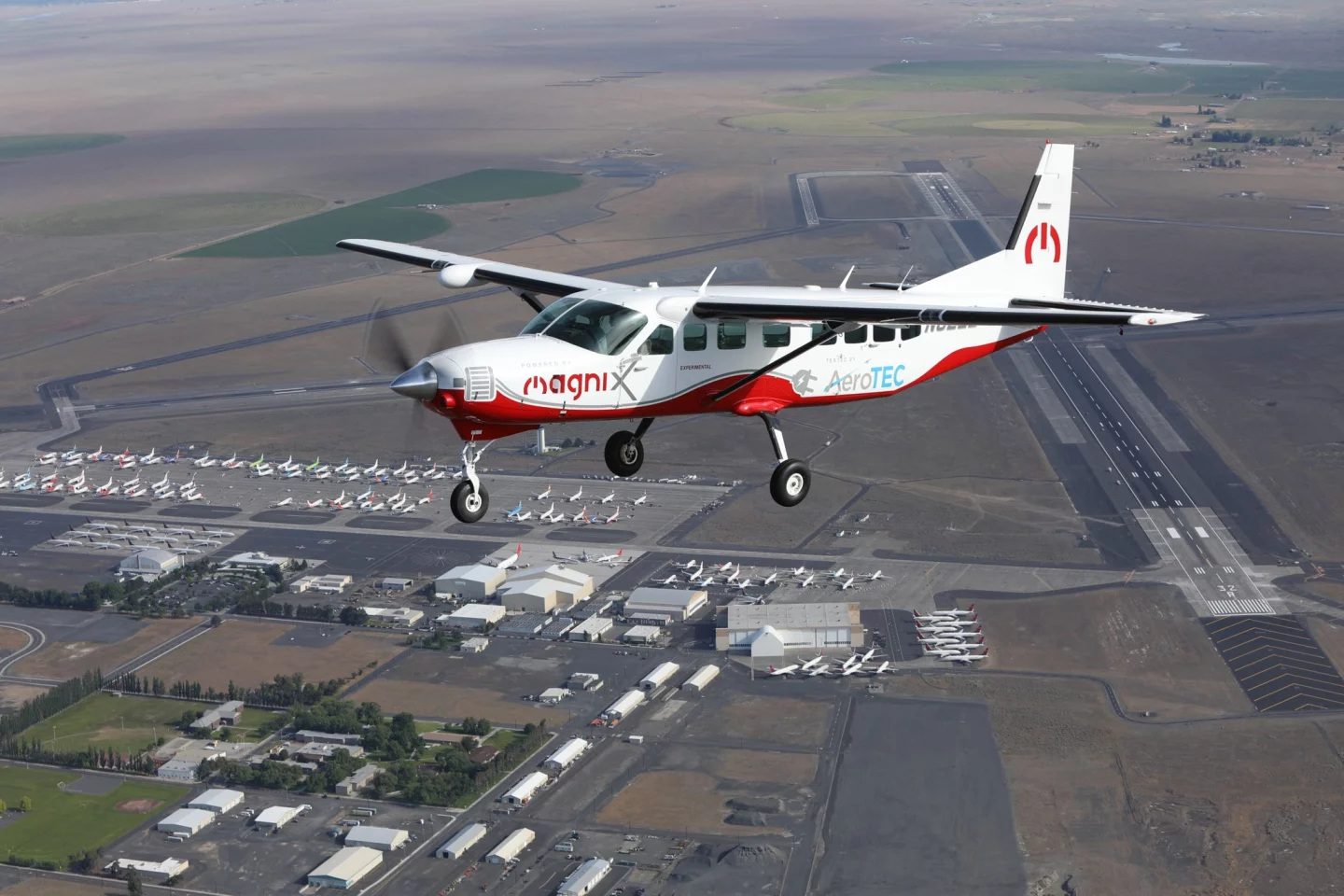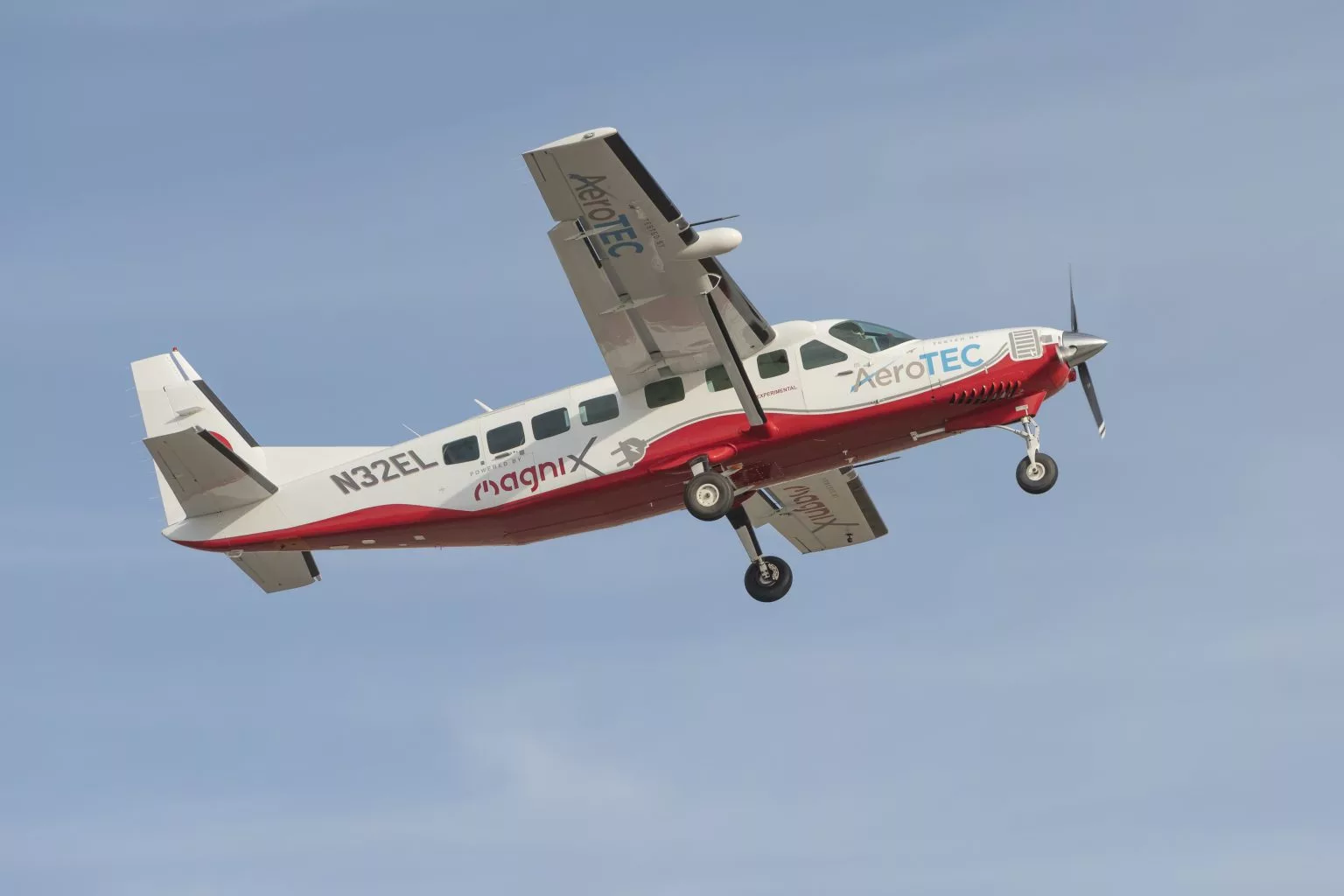The future of aviation is looking a little greener today, with a nine-seat Cessna aircraft fitted out with an all electric propulsion system successfully completing its first flight. This maiden voyage for the world’s largest electric aircraft marks another step forward for a nascent industry out to shake up the world of air travel, which could one day look a lot cleaner and cost effective than it does now.
This landmark flight was the product of a partnership between aerospace firm AeroTEC and electric propulsion company magniX, whose 750-horsepower (560 kW) magni500 propulsion system powered a modified six-seat seaplane through its first flight last December, with airline Harbour Air.
That marked the first successful flight of an all-electric commercial aircraft, but the team at magniX had slightly bigger fish to fry. The company had also teamed up with AeroTEC to convert a Cessna 208B Grand Caravan from a jet-fuel burning nine-seater to an all-electric, zero-local-emissions, low-cost aircraft. And today they allowed it to strut its stuff for the first time.
The maiden voyage took place at AeroTEC’s test facility in Moses Lake, Washington, where the so-called "eCaravan" – which has a 16 m (52 ft) wingspan – took to the air for around 30 minutes to become the largest all-electric aircraft to ever take flight.

“I’m proud of the pioneering work performed by our engineers, technicians and flight test team,” said Lee Human, President and CEO of AeroTEC. “There’s no roadmap for testing and certifying electric aircraft – this is a new frontier and AeroTEC is on the front lines developing the processes and best practices that will pave the way for electric aviation.”
MagniX has big plans for its magni500 propulsion system. As the latest of its electric motors, the company has deals in place with a number of key players in the electric aviation space. This includes supplying engines for Israeli startup Eviation, for the US’ largest independent regional airline in Cape Air, and an agreement to provide further electric engines for Harbour Air.

“The iconic Caravan has been a workhorse of industry moving people and transporting goods on short routes for decades,” said Roei Ganzarski, CEO of magniX. “This first flight of the eCaravan is yet another step on the road to operating these middle-mile aircraft at a fraction of the cost, with zero emissions, from and to smaller airports. These electric commercial aircraft will enable the offering of flying services of people and packages in a way previously not possible.”
Source: AeroTEC






